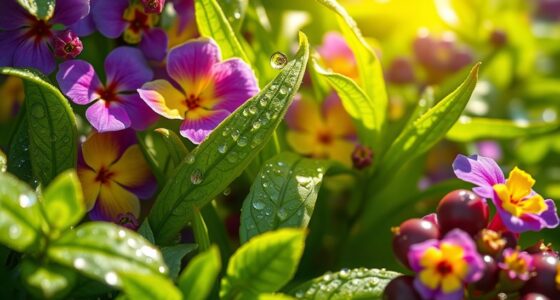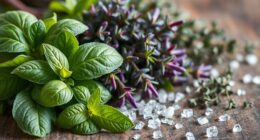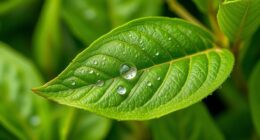As we seek to reconnect with nature, we're drawn to bioregional herbalism, an approach rooted in local plants and herbs. By prioritizing sustainable harvesting, ethical plant usage, and regional awareness, we build a deeper connection with the land and its inhabitants. This holistic approach honors the land's history, conserves native species, and promotes biodiversity. By focusing on local plants, we support the health of our ecosystems and ourselves. As we continue down this path, we'll uncover the intricacies of this unique approach to herbalism and discover the profound benefits of embracing our local environment.
Key Takeaways
• Bioregional herbalism emphasizes connection with the local environment, promoting sustainable harvesting and ethical plant usage.
• It prioritizes regionally sourced herbs, encouraging thinking locally and reducing environmental impact.
• By embracing local plant traditions, bioregional herbalism supports conservation of native plant species and promotes biodiversity.
• This approach recognizes local plant knowledge, develops deeper connections with the land, and promotes sustainable harvesting practices.
• Bioregional herbalism fosters a sense of community and responsibility towards the land, ensuring the long-term health of ecosystems.
Defining Bioregional Herbalism
As we explore the world of bioregional herbalism, we find that this approach to herbalism is rooted in the idea that the most effective remedies can be found in our own backyards, literally. By focusing on local plants and herbs, bioregional herbalism emphasizes the connection between herbalists and their immediate environment. This practice deepens our understanding of local ecosystems and plant populations, allowing us to develop a more intimate relationship with the natural world.
Bioregional herbalism promotes sustainable harvesting and ethical plant usage, ensuring that our herbal practices align with our values. By prioritizing regionally sourced herbs, we can maintain ecological balance and support the health of our local ecosystems. This approach to herbalism encourages us to think locally, recognizing that the most potent remedies often grow right outside our doors.
Embracing Local Plant Traditions

By focusing on local plant traditions, we can tap into the rich cultural heritage of our bioregion, where indigenous herbs have been used for generations to promote healing and wellness. This bioregional approach to herbalism allows us to develop deep connections with local plant populations, fostering a sense of belonging and respect for the land and its ecosystems.
By working with indigenous herbs, we're not only promoting biodiversity and sustainability but also supporting the conservation of native plant species in our bioregion. Embracing local plant traditions in our herbal practice promotes a holistic approach to health, wellness, and environmental stewardship.
We're able to tap into the wisdom of local plants, which have evolved over time to thrive in our specific climate and soil conditions. This approach encourages us to adopt environmentally conscious practices, ensuring the long-term health of our ecosystems.
The Importance of Regional Awareness
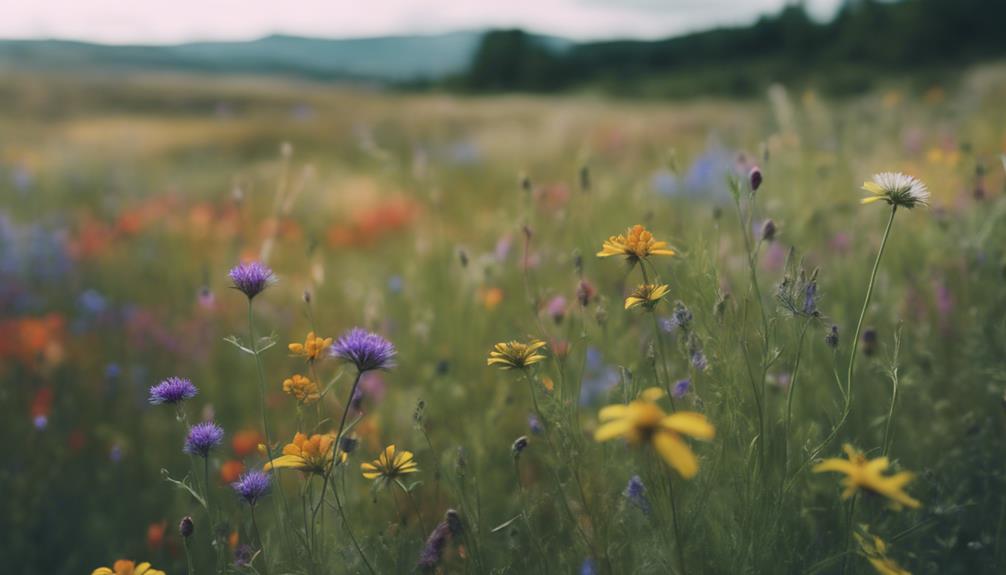
As we explore the importance of regional awareness in bioregional herbalism, we're reminded that understanding local plant knowledge and ecological nuances is essential.
By recognizing the unique characteristics of our bioregion, we can develop a deeper connection with the land and its plant allies.
Local Plant Knowledge
We endeavor to explore the heart of bioregional herbalism by recognizing that our local plant knowledge is deeply rooted in understanding the nuances of our regional ecosystem. By focusing on native plants, we develop a deeper connection to the land and its unique characteristics.
We learn about the medicinal properties, cultural significance, and ecological role of these plants, allowing us to appreciate their importance in our local environment. This regional awareness enables us to support the conservation of native plant populations and promote sustainable harvesting practices, ensuring the long-term health of our ecosystem.
As practitioners of bioregional herbalism, we aim to create harmonious relationships with the land and its plant allies. By doing so, we can work in tandem with nature, rather than against it.
Our local plant knowledge is the foundation upon which we build our understanding of bioregional herbalism, and it's essential for maintaining the delicate balance of our regional ecosystem.
Ecological Nuances Matter
Recognizing the intricate relationships within our local ecosystem, we must acknowledge that ecological nuances matter, and it's the regional awareness that enables us to select herbs that truly resonate with our unique bioregion.
By understanding the ecological nuances, we guarantee that the plants we choose are well-adapted to our region's climate and soil. This regional awareness is vital in bioregional herbalism, as it allows us to tap into the unique medicinal properties that have evolved in our local plants.
By doing so, we minimize the environmental impact of sourcing non-native herbs and foster a deep connection to the land. Our local environment has shaped the plants that thrive within it, and by using these plants, we're supporting the local ecosystem.
Bioregional herbalism promotes a harmonious relationship between humans and the land, encouraging us to appreciate the intricate web of life that surrounds us. By embracing regional awareness, we can realize the full potential of our local plants and develop a more profound appreciation for the natural world.
Honoring the Land and Its History
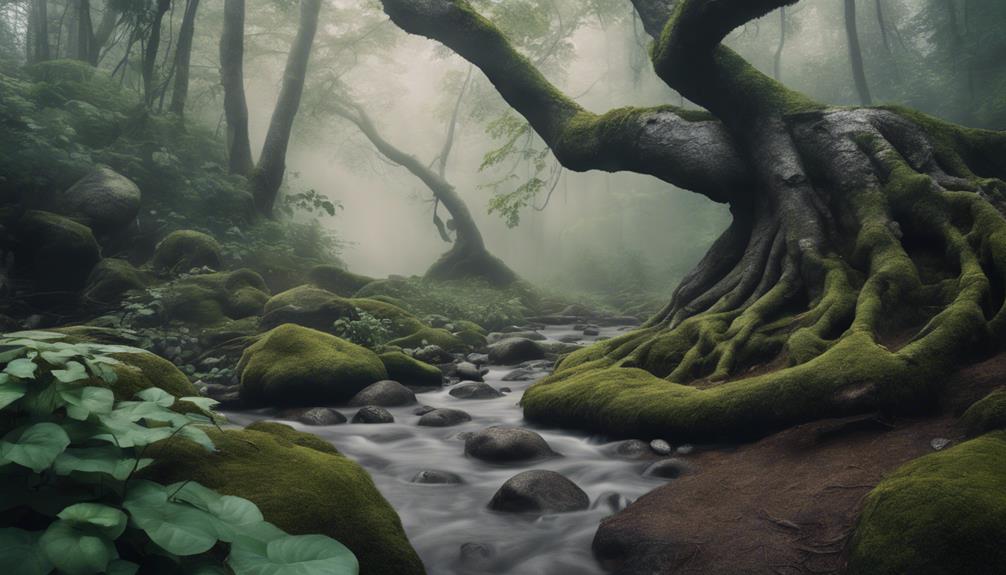
By sourcing herbs locally from small organic farms or wild abundance, we're not only ensuring the freshest and most potent medicine but also honoring the land and its history. This practice of bioregional herbalism emphasizes understanding the history of the land and its plant populations to deepen our connections with the ecosystem.
We show gratitude for the benefits of plants and support local growers to honor the land's contributions. Growing native medicinal plants, protecting endangered species, and essential ecosystems are key ways to honor the land in bioregional herbalism. By doing so, we're not only protecting the health of the land but also our own, as local plants have a profound impact on our well-being.
Our connection to the land is deeply rooted in our relationships with the plants, and by honoring the land, we're honoring ourselves. We're committed to protecting essential natural ecosystems, which in turn support our health. In bioregional herbalism, we recognize the intricate web of relationships between humans, plants, and the environment, and aim to maintain a delicate balance that benefits all.
Nurturing Sustainable Practices

As we endeavor to minimize our ecological footprint, nurturing sustainable practices in herbalism means making deliberate choices about how we source, harvest, and cultivate medicinal herbs. By adopting sustainable herbalism, we prioritize sourcing healing herbs locally from small organic farms or abundant weedy medicinals, reducing our environmental impact.
Here are three key actions we can take to nurture sustainable practices in herbalism:
- Practice Bioregional herbalism: Focus on cultivating medicinal herbs that are native to our region, ensuring the preservation of local plant diversity and ecosystems.
- Support local medicine makers and wildcrafters: By doing so, we promote sustainable harvesting and protect local plant populations from overharvesting, maintaining ecological balance.
- Evaluate the health of local plant populations: This important step ensures sustainable gathering and cultivation, supporting the long-term health of our local ecosystems.
Building Community Through Stewardship
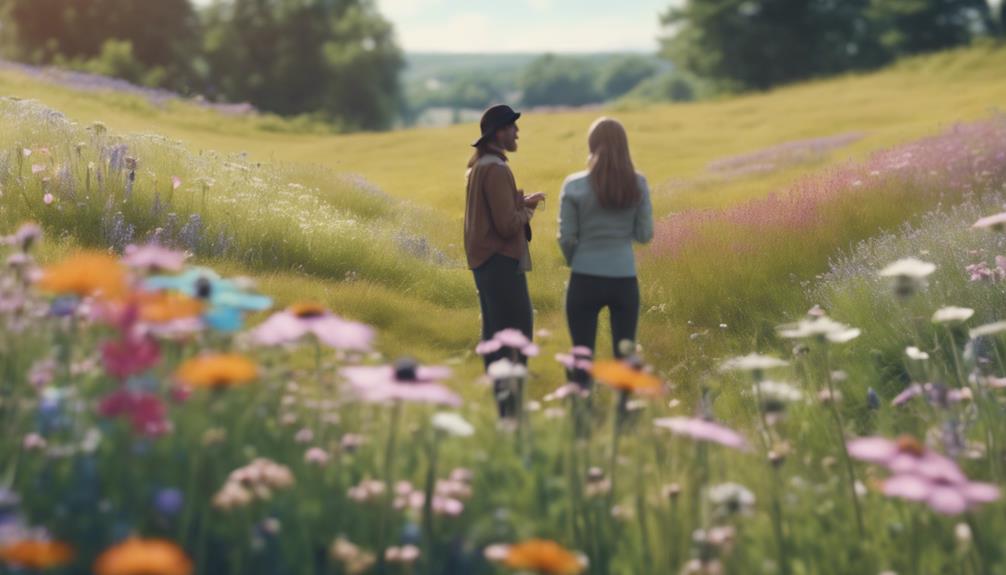
We take ownership of our role in preserving the health of our bioregion by actively caring for and protecting local plant populations. Through stewardship, we foster a sense of community and responsibility towards the land and its inhabitants.
By adopting ethical wildcrafting practices, we promote sustainable harvesting methods that support local ecosystems. This not only guarantees the preservation of our bioregion but also deepens our connection to the land and its plant allies.
As we engage in stewardship, we recognize the interconnectedness of our actions and their impact on the environment. By doing so, we contribute to the health and preservation of our bioregion, ultimately building a stronger, more conscious community.
In bioregional herbalism, stewardship is essential for maintaining the delicate balance of our ecosystems. By prioritizing sustainable practices, we can secure the long-term health and resilience of our local plant populations.
Through collective efforts, we can create a thriving community that honors the land and its inhabitants, promoting a deeper connection to the natural world.
The Interconnectedness of Humans and Plants

In recognizing our inherent connection to the natural world, we uncover the profound impact that local plant populations have on our well-being and the reciprocal role we play in their survival. As we explore the principles of bioregional herbalism, we begin to understand the intricate web of relationships between humans and plants.
This interconnectedness is rooted in the idea that our health and the sustainability of herbal practices are deeply tied to the health of local plant populations.
Here are just a few ways this interconnectedness manifests:
- Local plants support our well-being:
By utilizing locally sourced herbs, we can address specific health concerns and promote overall wellness.
- We have a responsibility to the environment:
As we depend on local plant populations, we must also acknowledge our role in preserving the environment and ensuring the long-term sustainability of these ecosystems.
- Our actions impact plant populations:
The choices we make, from harvesting practices to conservation efforts, have a direct impact on the health and resilience of local plant populations.
Preserving Biodiversity and Ecosystems
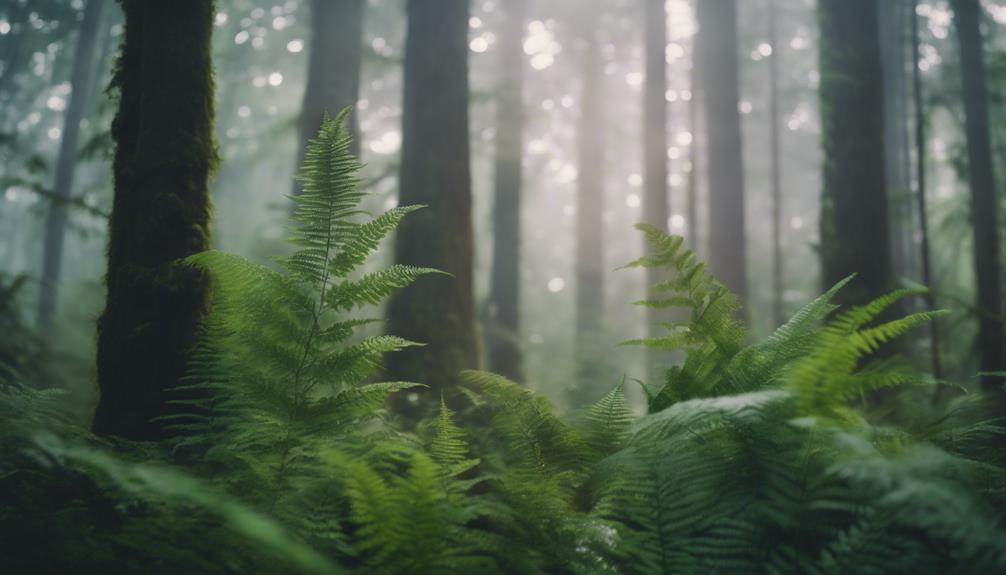
As we explore the importance of preserving biodiversity and ecosystems in bioregional herbalism, we recognize that the interconnectedness of ecosystems matters greatly.
By conserving native plants, we're not only preserving medicinal species but also maintaining ecological balance.
Ecosystem Interconnectedness Matters
Many ecosystems, including our own, rely on biodiversity to thrive, and preserving it's essential for maintaining the delicate balance of nature. As we explore the world of bioregional herbalism, we realize that ecosystem interconnectedness matters. We must acknowledge the intricate web of relationships between plants, animals, and microorganisms that sustain life on our planet.
Here are just a few reasons why preserving biodiversity is important:
- Ecosystem Services: Biodiversity supports essential ecosystem functions like pollination, nutrient cycling, and pest control.
- Resilience to Climate Change: Preserving biodiversity helps ecosystems adapt to the challenges posed by climate change.
- Sustainable Use of Local Plants: Bioregional herbalism promotes the sustainable use of local plants, reducing habitat destruction and supporting ecosystem balance.
Native Plant Conservation
We must prioritize native plant conservation to preserve biodiversity and maintain healthy ecosystems, recognizing that the loss of medicinal plant species can have far-reaching consequences for our planet's delicate balance.
As bioregional herbalism emphasizes the importance of protecting native plants and their habitats, we must adopt sustainable foraging practices and ethical wildcrafting to preserve native plant populations.
Unfortunately, over 4,000 medicinal plant species are threatened worldwide, highlighting the need for concerted conservation efforts. By supporting local herb farms and ethical wildcrafters, we can contribute to the conservation of native plant species. This not only secures the long-term availability of medicinal plants but also maintains ecosystem balance.
As we aim to preserve biodiversity, it's crucial to recognize the interconnectedness of ecosystems and the role native plants play in maintaining healthy ecosystems. By prioritizing native plant conservation, we can safeguard the rich tapestry of plant life that sustains our planet.
Cultivating a Deeper Connection

By venturing into our local ecosystems, we can develop a profound relationship with the land and its plant populations, ultimately deepening our connection to the natural world. As we spend time with local plants, we begin to understand their unique characteristics and medicinal properties. This understanding allows us to appreciate the intricate web of life that surrounds us.
To truly cultivate a deeper connection, we must:
- Observe seasonal changes: understanding the growth patterns of local plants is essential for building a meaningful bond with the land.
- Practice ethical wildcrafting and sustainable harvesting: responsible foraging guarantees the long-term health of the ecosystem and our relationship with it.
- Embrace stewardship and responsibility: as we deepen our connection to local plants, we recognize our role as guardians of the natural resources that sustain us.
Frequently Asked Questions
What Is a Bioregional Herbalist?
As herbal enthusiasts, we've wondered, what's a bioregional herbalist? Simply put, they're practitioners who focus on locally sourced herbs, prioritizing a deep connection with their region's land and plant life.
By doing so, they promote sustainable practices, ethical harvesting, and reduce the strain on global plant populations.
This approach fosters a sense of responsibility towards the environment and local ecosystems.
What Is the Oldest Medicinal Herb?
We've discovered that the oldest medicinal herb is likely yarrow, with a history of use spanning thousands of years. This ancient plant has been prized by various cultures, including the ancient Greeks, Egyptians, and Native Americans, for its diverse healing properties.
It's been used to heal wounds, reduce fever, and support digestive health. Yarrow's enduring popularity is a demonstration of its effectiveness and the strong bond between humans and plants in traditional medicine.
What Is the Difference Between a Herbalist and a Phytotherapist?
We've often wondered about the difference between a herbalist and a phytotherapist.
To clarify, herbalists take a holistic approach, incorporating spiritual and emotional aspects, while phytotherapists focus on the medicinal properties of plants, relying on scientific evidence.
Herbalists work with whole plants and traditional remedies, whereas phytotherapists extract and concentrate active compounds.
These distinctions shape their practices, with herbalists drawing on folk medicine and intuition, and phytotherapists following standardized protocols.
What Is the Difference Between Community and Clinical Herbalism?
As we explore the world of herbalism, we often come across two distinct approaches: community and clinical herbalism.
We find that community herbalism focuses on empowering individuals and communities to take care of their health using local plants and resources, whereas clinical herbalism involves working one-on-one with clients to address specific health concerns using herbal remedies and protocols.
Conclusion
As we explore the world of bioregional herbalism, we find ourselves immersed in a web of interconnectedness – with the land, its history, and the plants that grow within it.
By embracing local traditions, honoring the land, and nurturing sustainable practices, we cultivate a deeper connection with the natural world. In doing so, we preserve biodiversity, ecosystems, and the delicate balance of our environment.
Through bioregional herbalism, we weave a tapestry of community, stewardship, and reciprocity, ultimately enriching our understanding of the intricate relationships between humans and plants.





